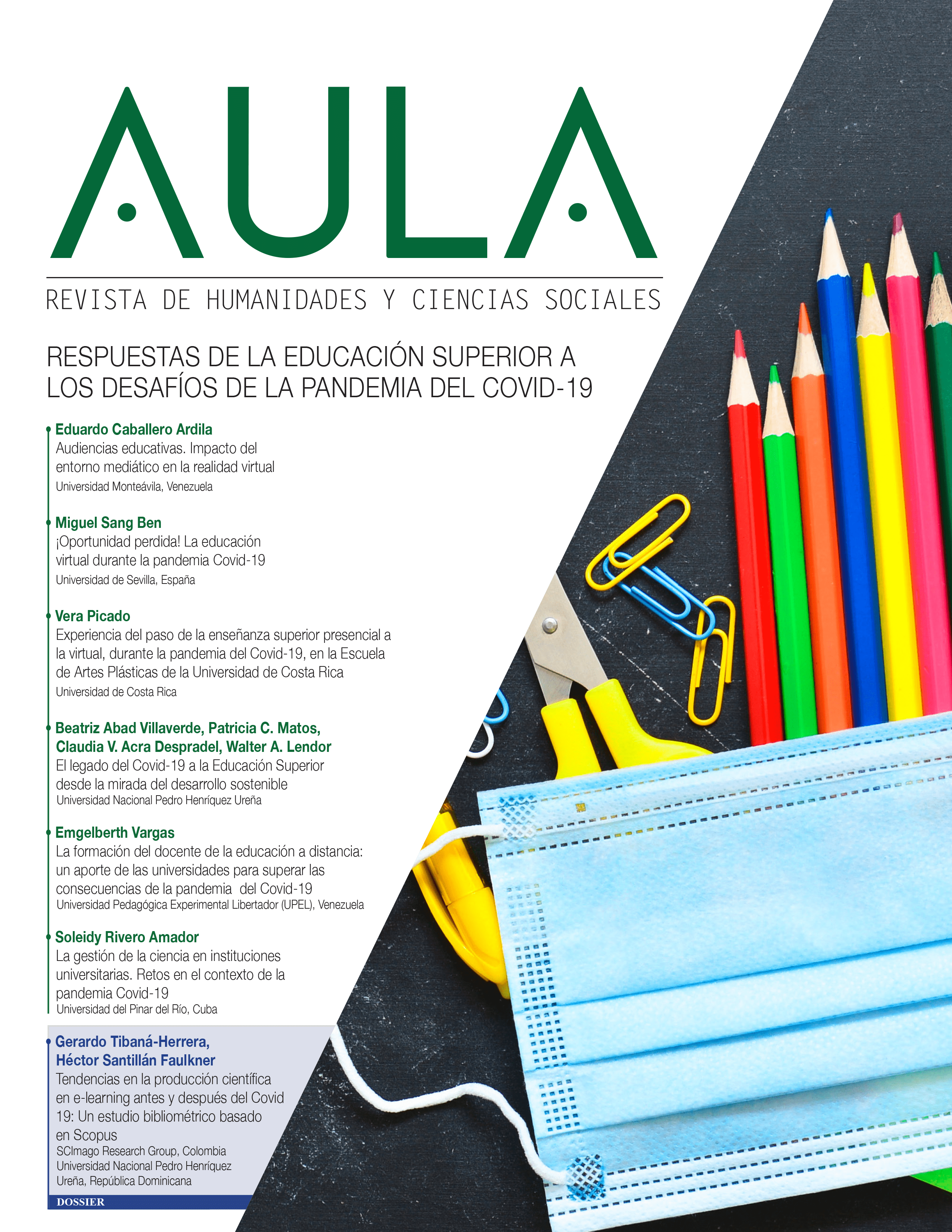Distance Education teacher training: a contribution from universities to overcome the consequences of the Covid-19 pandemic: Un aporte de las universidades para superar las consecuencias de la pandemia
Published 2022-07-02 — Updated on 2023-06-01
Versions
- 2023-06-01 (2)
- 2022-07-02 (1)
Keywords
- Formación del docente, Educación a distancia, Reforma curricular, Pandemia del Covid-19.
How to Cite
Copyright (c) 2022 AULA Revista de Humanidades y Ciencias Sociales

This work is licensed under a Creative Commons Attribution 4.0 International License.
Abstract
This document has been elaborated from a hermeneutic research process focused on the critical-constructive reading of different publications referred to the role that universities can play to overcome the impact of the pandemic in education. As a way of containing the expansion of Covid-19, conventional educational institutions assumed the distance modality without the educational actors being aware of the theory-practice of this modality. More than two years have passed and it is necessary to leave the contingency modality to access the planning modality. This presupposes the training of a teacher who, through his or her performance, demonstrates the efficiency and relevance of Distance Education (DE). Consequently, it is proposed that the universities responsible for the qualification of teaching professionals build and develop a curricular reform.
Downloads
References
- Arboleda, N. (2013). La nueva relación entre tecnología, conocimiento y formación tiende a integrar las modalidades educativas. En La Educación Superior a Distancia y Virtual. ACESAD/Virtual Educa.
- CEPAL-UNESCO. (2020). La educación en tiempos de la pandemia de Covid-19. https://repositorio.cepal.org/bitstream/handle/11362/45904/1/S2000510_es.pdf
- Dorfsman, M. (2013). La profesión docente en contextos de cambio: el docente global en la sociedad de la información. http://www.um.es/ead/reddusc/6
- García Aretio, L. (2002). Educación a distancia: de la teoría a la práctica. Editorial Ariel.
- Juca Maldonado, F. J. (2016). La educación a distancia, una necesidad para la formación de los profesionales. Revista Universidad y Sociedad. http://rus.ucf.edu.cu/
- McKensie, N., y Postgate, R.(1979). Enseñanza abierta. Sistemas de enseñanza postsecundaria a distancia. UNESCO.
- Organización Panamericana de la Salud (2022). Con catorce países que aún no han vacunado al 14% de la población, las Américas sigue siendo la región más desigual del mundo en la lucha contra el Covid-19. https://ww.paho.org/es/noticias/2-2-2022-con-14-paises-que-aun-no-han-vacunado-al-40-su-poblacion-americas-sigue-siendo
- Rama, C. (2013). El Contexto de la reforma de la virtualización en América latina. En La educación superior a distancia y virtual. ACESAD/Virtual Educa.
- Universidad Nacional Abierta. (2016). Plan de estudio. T.S.U. Educación Integral. https://sites.google.com/site/unaanzoategui/carreras/430_tsu_educ_integral

